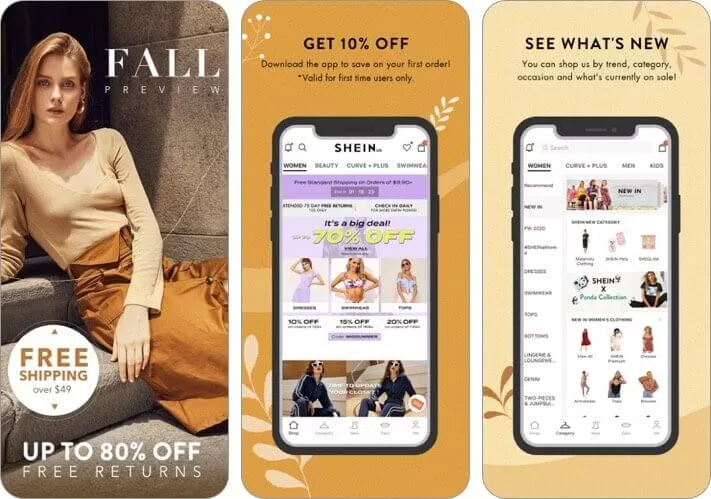Marketing concepts such as customer segmentation and positioning were popularised in the 40s and 50s when professors like Wendell R. Smith started documenting marketing techniques through research papers, books and articles. But segmentation has existed ever since trade practices began, albeit in an undefined form minus any labels.
The crude form of segmentation worked until the scope of business was restricted to the local market. As means of transportation developed and the effects of the industrial revolution started showing up, the need for organised marketing techniques was realised. Thus began the era of demographic, behavioural, psychographic and geographic segmentation of consumers.
These broad classifications worked for brands until the infusion of technology into retail. Access to the internet changed the face of the retail industry dramatically. The growth of smartphones, digital media, and global ecommerce started influencing consumer buying behaviour. While retailers got access to an abundance of consumer data with just a click, buyers’ expectations climbed up exponentially. As a result, predictive personalisation gained prominence in the retail industry.
Why Cohort Based Recommendations Don’t Work Anymore
While the term ‘personalisation’ is thrown loosely around, not every retailer has managed to utilise its full potential. In most instances, ‘segmentation’ and ‘personalisation’ are used interchangeably, despite both being two independent marketing techniques.
Traditional customer segmentation treats people as a cohort – a group of people with similar tastes and interests. It focuses on categorising, labelling and boxing people, instead of treating them as individuals with specific style preferences and needs. It offers a rather myopic view of categorising based on limited data points that usually are just broad fragmented categories.
On the other hand, real 1:1 personalisation requires brands to invest in AI & automation and prioritise it (not just on paper) in order to individualise their strategy, understand shopper intent and provide relevant recommendations that add value in real-time. It goes beyond just showing recommendations to understanding in detail the products you have and the shoppers who visit your website. Only with proper product and customer intelligence can a brand successfully personalise for their shoppers.
Only when you segment shoppers instead of personalising for them, we hear cases like a customer being recommended mosquito nets after purchasing one a week back. Or a person waking up to a dozen promotional emails about baking trays after buying an oven. These examples don’t imply that they aren’t ‘personalisation’. It implies that they are ‘irrelevant personalisation’, which would be regarded as a failure.
For example, out of the 100% oven buyers there might be a percentage that needs trays. However, sending all of them a prompt to buy ‘tray’ reflects that the brand has put everyone from that group under one category, instead of mapping their individual needs. This illustrates the outcome of confusing segmentation with personalisation.
Brendan Witcher, VP & Principal Analyst at Forrester Research disclosed that 90% of organisations are going to invest in personalisation but only 40% of consumers say that the information they get from a brand is relevant to them. He added that one of the reasons for this gap between brand’s effort and actual results is ‘segmentation’ in the garb of ‘personalisation’ as it creates the wrong experience for consumers.
Valuing Consumers’ Data
Consumers today are aware that their digital footprints are visible to brands that they interact with, directly or indirectly. After multiple privacy scandals in the recent past, people are more aware of their data privacy rights. They also understand that today, a customised shopping experience can only be delivered if they allow brands to capture their data. So they happily give consent, allow mobile apps to access their personal data, accept ‘cookie’ policies, diligently fill out account information forms, rate shopping experience, provide feedback, share preferences and turn on their notifications.
65% of consumers are willing to share their personal information with a brand or retailer in exchange for more personalized shopping experiences, coupons or other benefits.
In spite of doing all that, if brands fail to offer relevant product recommendations, then it would lead to distrust and dissatisfaction.
Consumers often wonder what exactly brands are doing with their data, if they are not using it to offer personalized service. The statistics mentioned in an Accenture report reflects this exact sentiment.
The report stated that US-based companies suffered a loss of $756 billion as customers switched to other brands. The reason for this switch was lack of trust and companies’ abysmal attempt at personalisation. 79% of consumers were frustrated with the fact that some companies cannot be trusted to use their data correctly. Accenture’s report also states that “the percentage of consumers saying their biggest frustrations with providers—failure to deliver on their promises, inefficient and slow customer service, and lack of interaction convenience—have remained consistent in the past few years.”
What is Real Personalisation?
This shadow of frustration that’s hovering over customers can be swiftly removed if brands sincerely agree to invest in AI and technology to address customers’ needs. The emphasis is on the word ‘sincere’ because personalisation can only bring good results if companies agree to prioritise this strategy and implement it properly.
1:1 real personalisation is not grouping your shoppers into buckets based on demographics or psychographics but rather understanding what drives each of your shoppers. It is understanding the visual cues that your shoppers leave on your website, combined with their intent in the current session and long term purchasing behaviour. This is just one part of the puzzle. The other part is using AI to extract and standardise product data across the entirety of your catalogue. This product data is then mapped to your customer data to surface relevant recommendations. This is what true personalisation means, and this works by addressing each individual shopper instead of groups.
Companies need to increase the value generated by customer experiences through automation and meticulously focus on metrics & initiatives that are truly relevant to customers with the help of analytics.
For those of you who are not familiar with Spotify Wrapped, it’s a yearly report that Spotify publishes where it accumulates all of your listening data from Jan to Oct and creates a personalised report for each user. Yes, you read that right, it creates a personalized report for every single user (and spotify reported 158 million listeners in Q1, 2021). It usually tells you how many new artists you discovered, how many genres you listened to along with several top fives: your five most played songs, your top podcasts (a new feature), and your top artists.
Must read article: The era of robotic email marketing has arrived
Last year (2020), Spotify went a step further and introduced in-app quizzes to these reports to make it more interactive.
The reason why Spotify is also able to curate these reports is because they use collaborative filtering, NLP, and audio models that predict and suggest new music to their users. All interactions that a user performs is fed back into the model which then proceeds to learn more about the users themselves. On paper, the very idea of producing 150+ million personalized reports sounds like a daunting task, but Spotify makes it possible using their unique ANNOY library. It goes to prove that data and technology can assist in realising any goal as long as brands have the foresight to envision a unique and relevant experience for its customers.
There was a time when recommending products was enough to impress buyers and convince them that the brand is at the top of their game when it comes to machine learning and AI in retail. But today companies need to personalize all points of contact, be it offline or online. It is more than producing 30 search results for a burnt orange dress. It is all about providing custom-made relevant recommendations across all channels of sales, marketing and service. It is all about not letting irrelevant recommendations reach consumers’ inboxes. It is all about muting irrelevant recommendations based on an individual’s feedback.
Optimum use of AI and automation enables brands to understand shopper intent and individualise their offerings and service! If your interest is piqued, then get an exclusive demo of how our solution can help you and your business by dropping a comment below or signing up for a demo.





